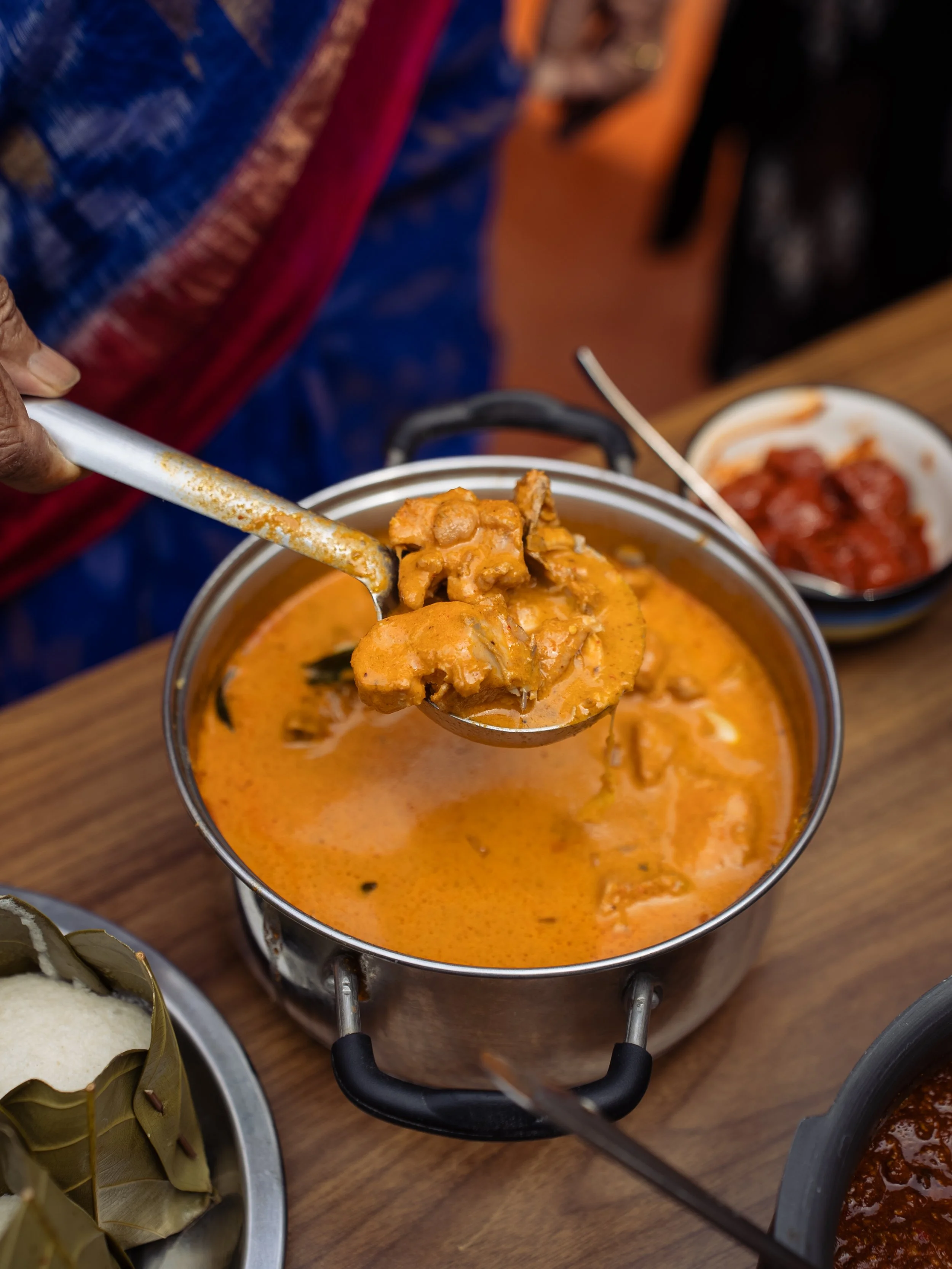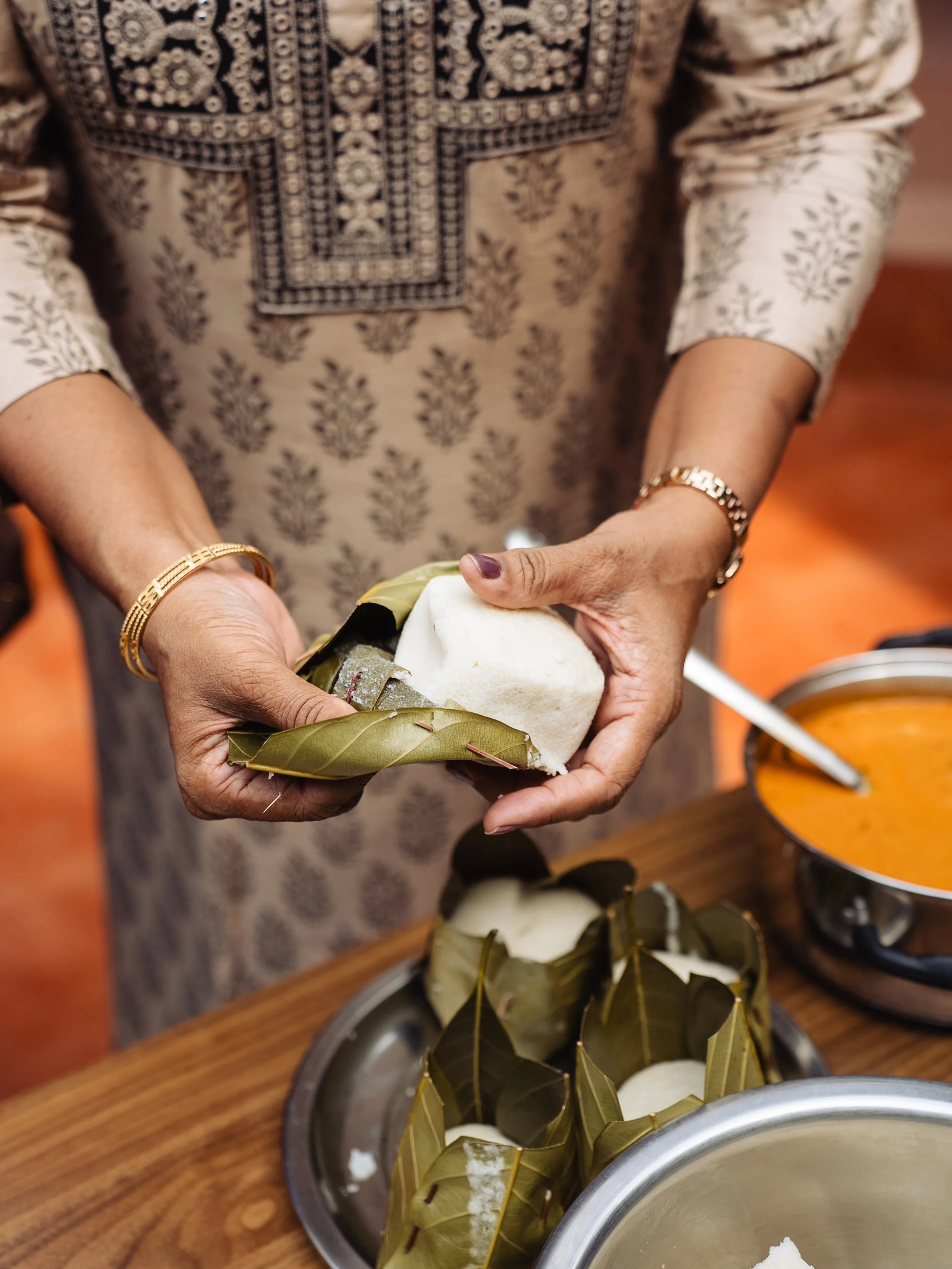#1000Kitchens Recipe Drop: Bunt-style Kori Gassi and Kotte Kadubu

Geetha Shetty’s childhood was spent in Bengaluru but every visit to her grandmother’s home in Shiroor was special.
Geetha belongs to the Bunt community from Karnataka’s South Canara region, who mostly follow a matrilineal system or Aliyasantana as it is called in Kannada. “Daughters are the ones running and supporting the household in Bunts,” she says.
Today, she’s at her ancestral home to make kori gassi and kotte kadubu. Kori gassi is a signature in her community. “At every Bunt wedding, you’ll find it. The feast is incomplete without it.” Kori is the Tulu word for chicken, and gassi is a curry, but the spice mix and base can vary for different vegetables and meat.
Just like her grandmother, she has also chosen to cook kori gassi in a clay pot, over a wood fire. “We make a dry roast version of this masala base. If you refrigerate it, it stays good for a year easily, especially when you need to make something instantly, and this comes handy.” The powder, called Kundapur chicken masala, accompanied Geetha to her marital home in Bombay, which she used to make fish fry, prawn, and crabs.
This is a #1000Kitchens feature. Read more, here.
RECIPE FOR KORI GASSI
Ingredients
1 kg chicken
Salt to taste
For the masala paste:
15 Byadgi red chillies
½ tsp peppercorn
2 tbsp coriander seeds
1 tbsp cumin seeds
½ tsp methi seeds
¾ tsp fennel seeds
½ tsp poppy seeds
1 inch cinnamon bark
7-8 cloves
1 onion sliced
7- 8 garlic cloves
2 tbsp coconut oil or ghee
¾ cup grated coconut
A marble-sized tamarind (soak and extract)
½ tsp turmeric powder
For tempering:
1 tbsp ghee
1 onion finely chopped
5 - 6 crushed garlic pods
A sprig of curry leaves (optional)
Method
Fry the spices one by one in ghee/oil, starting with chillies. Once the spices are done, fry the onion and garlic in the same pot, ensuring they are transparent.
Then fry the coconut. Ensure you don’t burn any of this mixture because this crucial step gives the distinct flavour and colour. Add tamarind to this and make your paste.
Extract coconut milk, you’ll need at least 2 -3 extracts. Set aside all the extracts. The first extract will be thicker. Be frugal with water usage for the first extract. For the next two, add water slowly and the consistency becomes thinner with each extract. This is a crucial step because every extract has a specific role to play.
In a heavy bottom pan, fry crushed garlic and onion until it's transparent. Then add chicken and a little salt to this. Cover and let it cook for a bit until the colour changes a little.
Now, add the second extract of milk to this and the ready masala and allow it to cook. It’s a reverse order. Once it’s done a little, add the first extract and let it simmer until the first boil for 5 mins. Once it boils, turn off the heat.
While the curry cooks in residual heat, make a tadka of finely chopped onion and crushed garlic. You can add a few curry leaves too.
RECIPE FOR KADUBU
Ingredients
1 cup udad dal
2 cup idli rice/idli rava
4 leaves for 1 idli pocket
Method
Use a 1:2 ratio of urad dal and idli rice/rava.
Soak them for 5 hours and make a thick batter by grinding, adding water at each stage until you get a nice thick batter.
Soak idli rice/rava for 10 mins and add it to the batter, and let them both ferment for about 8 hours minimum. Then add salt and mix it once nicely.
Pour this batter into the kottes and let it steam for 20 mins.
Words by Mradula Hegde. Photography by Terrence Manne.
Special thanks to our partners.
ALSO ON GOYA












